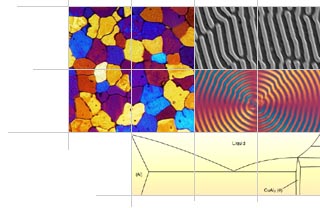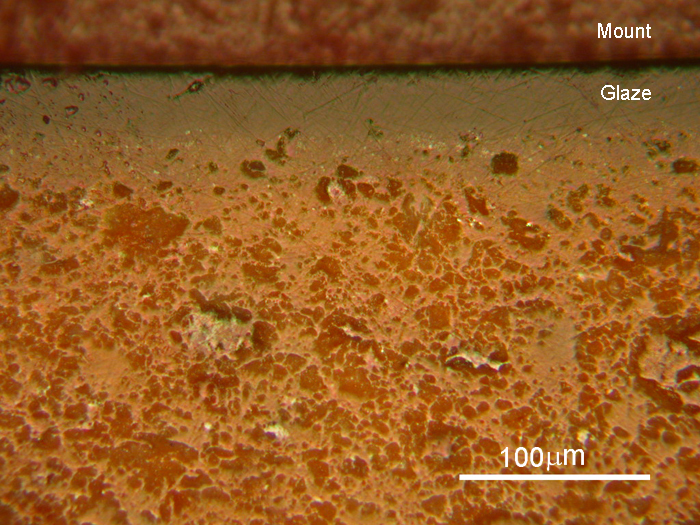Micrograph Library
Browse the libraryAdvanced searchSystemsCompositionsTechniquesKeywordsPhase diagramsHelpPreferencesAbout the micrograph libraryTerms of useContribute micrographs!FeedbackLinksCredits Print this page

Micrograph 178 and full record

- Micrograph no
- 178
- Brief description
- Terracotta pottery, showing the glaze on the surface
- Keywords
- ceramic
 , clay, glaze, grog, SiO2, terracotta
, clay, glaze, grog, SiO2, terracotta - Categories
- Ceramic
- System
- Terracotta
- Composition
- Terracotta is composed of mixtures of fired grog and clay.
- Standard codes
- Reaction
- Processing
- Applications
- Flowerpots, roof tiles, ornaments and sculptures, and other outdoor uses.
- Sample preparation
- Polished but unetched
- Technique
- Reflected light microscopy
- Length bar
- 100 μm
- Further information
- Terracotta can be made in large shapes due to the fact that a large part of the raw materials has been prefired, so firing shrinkage is low. The characteristic red colour is due to the presence of iron (II) oxide. The glaze is mostly SiO2, and is applied to render the surface impermeable to liquids and gases, and to provide a readily cleanable surface which protects the terracotta.
- Contributor
- Dr K M Knowles
- Organisation
- Department of Materials Science and Metallurgy, University of Cambridge
- Date
- 09/08/02
- Licence for re-use
 Attribution-NonCommercial-ShareAlike 4.0 International
Attribution-NonCommercial-ShareAlike 4.0 International- Related micrographs
View image alone .. in a new window
Help is available on downloading images

